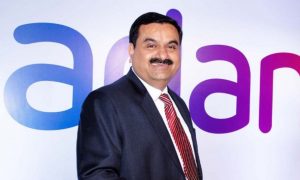Grounded Jet Airways has led to around 20,000 job losses, according to reports. Each one of these employees would have a story to share – of aspirations and goals which were not fulfilled due to lack of income, of home loan equated monthly instalment (EMI) missed and cancelled vacations and forced delay in healthcare expenses.
The trauma arising out of it cannot be avoided but the monetary impact can be minimised if one has adequate emergency fund in place.
Basics of financial planning suggest starting one’s financial journey by addressing ‘protection’ needs. In addition to adequate insurance coverage, one need to build an emergency fund. Financial planners suggest one should keep aside a sum equal to your six month’s expenses, at least. This should also include sums targeted towards EMI payment.
If you have monthly expense of Rs 30,000 and you have an EMI of Rs 10,000 per month, then you should keep aside Rs 2.4 lakh minimum.
The idea is to overcome a situation such as job loss, accident which would lead to loss of income. If any of such a risk materialises, then you will be in a position to pay for your routine expenses.
For example, if one meets with an accident and is hospitalised, his hospitalisation bills will be paid by insurer if he has adequate coverage. But who will pay for his other expenses? The household expenses and EMIs do not disappear just because of hospitalisation. If he has an emergency fund in place then he can tide over such a situation without suffering much in monetary terms.
You should be assessing your situation to ascertain the right size of the emergency fund. If you think that six months are enough to get a new job with similar salary, in case you lose your existing job, then an emergency fund worth six months of expenses is enough.
However, as one rises in career the chances of getting a new job with similar payout decreases generally. If you are higher up in an organisation’s hierarchy or in a specialist role, which is difficult to land into with other employer, better keep a bigger emergency fund. In such situations, to ensure peace of mind, one may want to keep up to three years’ expenses in an emergency fund.
The idea of the emergency fund necessitates that you keep it in such avenues that it should be available when you need it. Bank fixed deposits and liquid funds are the best options to keep the money aside. Though they do not offer top of the chart returns, they are liquid in nature and your capital is not at risk, in most situations.
For individuals in high tax brackets they may choose to park their money in a combination of liquid funds and bank fixed deposits. Depending on your liquidity needs and the absolute size of the emergency needs, you may want to allocate larger share of your emergency fund to liquid funds. If you do not have an emergency fund in place, consider a recurring fixed deposit or a systematic investment plan into a liquid fund. And plan the SIP taking into account the target amount of the emergency fund.
Emergency fund thus built is the first step in the direction of achieving financial freedom. Creation of such an emergency corpus ensures that in case of an emergency, you do not touch your core portfolio and achieve your financial goals as per the original timeline.Creation of emergency fund does not end the risk management process. You have to keep reviewing your emergency fund the way you are expected to review your financial plan.
For more updates: Like us on Facebook and follow us on Twitter & Instagram





































